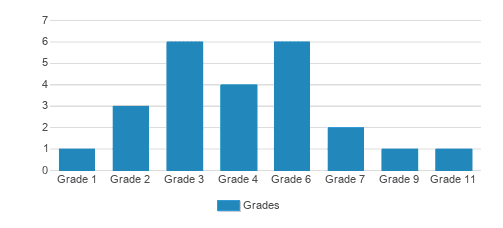The purpose of Tomorrow's Children is to create a positive, healthy environment for each child.
In order to accomplish this aim, reinforcement is emphasized and discipline de-emphasized.
However, it is recognized that external controls often have to be used in teaching children internal control and discipline.
Through many years of study, we have learned that a simple removal from the situation can be a very effective treatment technique.
This technique utilizes normal discipline conditions such as sitting in a chair, on the floor, or going to his/her bedroom.
In situations where sufficient control by the client have not been achieved, a more restrictive room may be used for very short periods of time.
The reason for this short duration is that extensive disciplinary conditions such as restricting childen for extended periods of time has not shown to have the desired effect.
In fact, extended periods of discipline only contributes to a negative environment in which very little learning takes place.
Therefore, we are always striving toward utilizing the least restrictive techniques possible while in the process developing more normalized, internal control.
Quick Stats (2025)
- School Type: Special Education School
- Grades: Kindergarten-9
- Enrollment: 22 students
- Application Deadline: None / Rolling
- Source: National Center for Education Statistics (NCES)
School Overview
School Type
Religious Affiliation
Grades Offered
Grades Kindergarten-9
Student Body
Total Students
22 students
Student Body Type
Co-ed
% Students of Color
50%
State avg.: 35%
Students by Grade

Academics and Faculty
Total Classroom Teachers
2 teachers
Student : Teacher Ratio
11:1
National avg.: 13:1
Tuition and Acceptance Rate
Admission Deadline
None / Rolling
School Notes
- The purpose of Tomorrow's Children is to create a positive, healthy environment for each child. In order to accomplish this aim, reinforcement is emphasized and discipline de-emphasized. However, it is recognized that external controls often have to be used in teaching children internal control and discipline. Through many years of study, we have learned that a simple removal from the situation can be a very effective treatment technique. This technique utilizes normal discipline conditions such as sitting in a chair, on the floor, or going to his/her bedroom. In situations where sufficient control by the client have not been achieved, a more restrictive room may be used for very short periods of time. The reason for this short duration is that extensive disciplinary conditions such as restricting childen for extended periods of time has not shown to have the desired effect. In fact, extended periods of discipline only contributes to a negative environment in which very little learning takes place. Therefore, we are always striving toward utilizing the least restrictive techniques possible while in the process developing more normalized, internal control.
Source: National Center for Education Statistics (NCES)
Frequently Asked Questions
What schools are Tomorrow's Children often compared to?
Tomorrow's Children is often viewed alongside schools like Waupaca Christian Academy by visitors of our site.
When is the application deadline for Tomorrow's Children?
The application deadline for Tomorrow's Children is rolling (applications are reviewed as they are received year-round).
School Reviews
Endorse Tomorrow's Children. Endorsements should be a few sentences in length. Please include any comments on:
- Quality of academic programs, teachers, and facilities
- Availability of music, art, sports and other extracurricular activities
- Academic or athletic awards
Recent Articles

A Parent's Guide To Understanding High School Teaching Methods
This comprehensive guide helps parents navigate the various teaching methods used in today's high school classrooms. By understanding these approaches, you'll be better equipped to support your teen's learning journey, communicate effectively with teachers, and create a complementary learning environment at home.

February 08, 2025
Social Emotional Learning: Education's Hidden SymphonyA musician's perspective on Social Emotional Learning reveals how this educational framework orchestrates success through five essential emotional competencies.

January 24, 2025
A Roadmap For Starting A Private SchoolUse this roadmap as a set of talking points with your trusted mentors and professionals to start the private school of your dreams. You're not alone. Over the years, hundreds of folks like you have had the same dream. From Quintilian to Maria Montessori to Lucy Madeira Wing, visionary educators have established schools to teach according to their beliefs and methodologies.





















